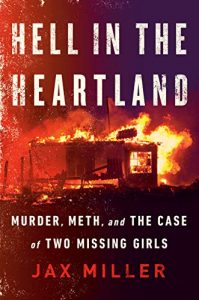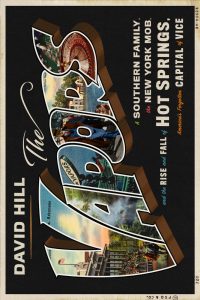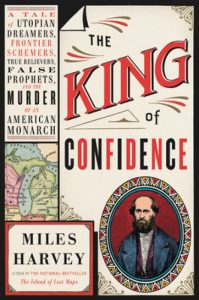July’s plethora of true crime releases signals a new maturity in the true crime boom. From painful and honest memoirs of loss and anger, to sober true crime reportage, to international sagas of assassinations, to absurdly entertaining historical con artists, July showcases the diversity of a genre that has truly come into its own. Each month the CrimeReads editors round up all the best true crime and crime nonfiction coming out this month, but rarely have we come across a month so many great new additions to the canon. These stories will anger you, they will anchor you, they will surprise you, and they will remind you that the road to justice is long and arduous.
Ingrid Wall and Joachim Wall, A Silenced Voice: The Life of Kim Wall (Amazon Crossing)
In their jointly written and heart-breaking memoir, Ingrid and Joachim Wall, the parents of murdered Swedish journalist Kim Wall, remember the trauma of their loss and honor the memory of their daughter. A delicate, brave, and beautiful rendering of unimaginable grief. –Molly Odintz, CrimeReads Senior Editor
Rose Andersen, The Heart and Other Monsters (Bloomsbury)
Rose Andersen and her younger sister Sarah had a challenging childhood, and both turned to drugs and alcohol to cope. Rose, however, got clean after years of drinking, while Sarah spiraled further and further into heroin abuse. When Sarah was found dead of an overdose, the family was heart-broken, but not surprised; when they discovered the overdose was on meth and not heroin, and that the amount in Sarah’s system was absurdly high, Rose began a quest to discover the truth behind her sister’s death and to come to a reckoning with their early years and difficult relationship. Not since Leah Carroll’s Down City have I come across a true crime memoir with such beautiful, spare, and moving prose. –MO
John Billman, The Cold Vanish: Seeking the Missing in North America’s Wetlands (Grand Central)
Every year, some unknown number of persons disappear into the wildlands of North America. John Billman, a regular writer for magazines like Outside, was assigned the task of trying to figure out just how many of them do vanish, a quest that set him on a path to writing The Cold Vanish. The book is a fascinating account of the continent’s remaining wildernesses, the people who are drawn to them, and those who dedicate their lives to finding the missing. The Cold Vanish is the perfect intersection of nature and true crime writing and one of the year’s most haunting reads. –Dwyer Murphy, CrimeReads Editor-in-Chief
Ravi Somaiya, The Golden Thread: The Cold War and the Mysterious Death of Dag Hammerskjold (Twelve)
Ravi Somaiya’s summing up of the investigation into the mysterious death of United Nations general secretary Dag Hammerskjold is as epic and sweeping as one would expect. The Americans, the Brits, the Rhodesians, and the Soviets (and a slippery and terrifying white supremacist organization out of South Africa) all want their hands on the Republic of Congo’s vast mineral wealth, and only the new nation and the UN forces stand between freedom and exploitation. This book speaks to the origins of our current days of discontent, and it reads like a thriller (the case has continued to develop to this day).–MO
Jax Miller, Hell in the Heartland: Murder, Meth and the Case of Two Missing Girls (Berkley)
Jax Miller first got on my radar for Freedom’s Child, a furious and breakneck journey across an apocalyptic American landscape, based on Miller’s own experiences with hitchhiking and addiction in her 20s, and her new true crime book is just as beautiful and devastating. Hell in the Heartland digs deep into a case involving a trailer fire, two missing best friends, and an interconnected web of drug trafficking, murder, and cops looking the other way. –MO
David Hill, The Vapors: A Southern Family, The New York Mob, and The Rise and Fall of Hot Springs, America’s Forgotten Capital of Vice (FSG)
Before Vegas was even a twinkle in Bugsy Siegel’s eye, Hot Springs, Arkansas, spent the roaring 20s playing host to the biggest gangsters in the nation, with prominent casinos that put equal emphasis on entertainment and gambling. David Hill takes us into the metamorphosis of a sleepy resort town into a vacation hub guaranteed to play host to stage darlings, their mafioso fans, and the fur drenched extramarital companions of both. Of course, the party’s bound to come to an end some time, but in what a spectacular fashion! –MO
Miles Harvey, The King of Confidence: A Tale of Utopian Dreamers, Frontier Schemers, True Believers, False Prophets, and the Murder of an American Monarch (Little Brown and Co)
Immediately after finishing this one, I texted a friend who, like me, had spent years living in housing cooperatives and had an interest in utopian communities, squeeing about my new favorite ne’er-do-well of history: James Strang, a con artist for the centuries. Strang failed at many an antebellum profession before finding his calling; after a plan to lure Mormons to Michigan to pay inflated land prices was threatened by the sudden demise of Joseph Smith, James Strang had a sudden revelation that he was Smith’s intended successor.
Enjoy this wild tale of Strang’s breakaway Mormon cult, who bought into the land deal but eventually ended up a little more skeptical of their new lord and master, who even insisted on being crowned king. Among his henchman was a failed Shakespearean actor whose ability to deliver tragic monologues was often interfered with by his alcoholism, sexually predatory behavior, terrible selections in plays, and inconceivably dirty shirts. When the community moved to a remote island in Lake Michigan, they immediately began to enthusiastically engage in piracy, bringing the attention of the US government down on them but providing many opportunities for their silver-tongued leader to talk his way out of seemingly inescapable predicaments.
One of the many sins of Strang’s utopian settlement? His second wife (after Strang’s long-delayed embrace of polygamy) got used to wearing pants while disguised as his male secretary on a lecture tour. She then brought the appetite for bloomers into the community long before they took the nation by storm, and family loyalty to the king was measured by, among other things, whether or not the women wore pants. Those defiant of his regime wore skirts in rebellion. Why was this never the subject of a Gilbert and Sullivan musical?!?! Pirates and pantaloons! I’ll stop here but please read this book. It’s the most fun you’ll ever have reading about the 1840s. –MO
Harold Shechter, Ripped From the Headlines (little a)
Harold Shechter has created a highly entertaining look at the real life stories behind many of Hollywood’s crime films, beginning long before the current true crime boom. Shechter includes a huge number of films, including plenty of Golden Age film noirs, salacious pre-Hays Code thrillers, and modern day dramas. The description of the crimes themselves are necessarily sobering, and the contrast between film criticism and real life events is the tension from the book draws its strength. This will make you want to re-watch all your old favorites with a completely new perspective. –MO
Nicolas Griffin, The Year of Dangerous Days: Riots, Refugees, and Cocaine in Miami 1980 (37 Ink)
Griffin’s new book is essentially a year-in-the-life of a great American city, but the year is 1980, the city Miami, and the events completely transformative of society at large. Griffin chronicles a wild intersection of events including a massive influx of refugees from Cuba, the launch of a war between rival narcotraffickers, police abuse, murder, and dizzying swirls of conspiracy, all the while Miami was beginning its transformation into a revived vacation destination. Miami remains one of the continent’s most fascinating cities, and anyone wishing to understand how it got that way, and the persistent social divides that have shaped it, should read Griffin’s captivating account of 1980. –DM
Baynard Woods and Brandon Soderberg, I Got a Monster: The Rise and Fall of America’s Most Corrupt Police Squad (St. Martin’s)
Baynard Woods and Brandon Soderberg have a shocking story here, and one that must be a Tarantino movie, immediately. In very recent history, the leader of a squad known as the Gun Trace Task Force used his group’s seemingly successful bust rate as cover to steal drugs and cash from dealers all over the city, fence the drugs through his bail bondsman partner in crime, and split the cash with his squad mates. Of course, things couldn’t go smoothly forever, as the guilty consciences of his squad, the anger of communities, and the growing interest of internal affairs all come together to destroy the well-oiled corruption ring from within. This story is one more reason to support defunding the police. –MO
Unspeakable Acts: True Tales of Crime, Murder, Deceit and Obsession, edited by Sarah Weinman (Ecco, July 28)
As the true crime boom continues, it would behoove us all to partake in the flowering of criticism over the past few years examining what exactly we’re getting out all this interest in real-life murder and mayhem. Concurrently, the quality of true crime writing and the ways in which writers ingeniously weave the threads of a crime into the wider world have continued to soar to ever-greater heights. In Unspeakable Acts, Sarah Weinman has gathered together a brilliant collection of essays in her new collection, including both tales of true crime and examinations of true crime itself, from a host of contributors who represent the best and brightest of the crime writing world. Each essay is as thoughtful as it is gripping, for what promises to be the best true crime essay collection of the year. –MO




























